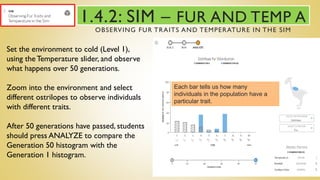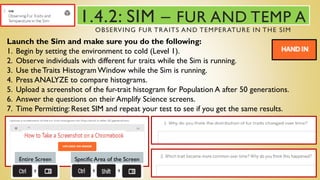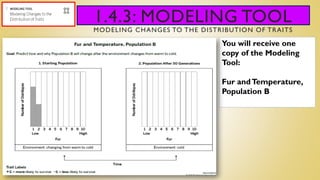The document describes how a population of ostrilopes experienced a change in their environment from warm to cold over generations. Students used a natural selection simulation to observe how the distribution of fur traits in the population changed over time in response to the colder environment. Specifically, ostrilopes with higher levels of fur, which were adaptive in the cold, became more common, while those with lower fur levels, which were non-adaptive, decreased. Students then used a modeling tool to visually represent these changes and predict how another population may respond if its environment also became colder.






























































